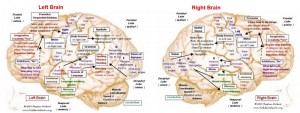Antidepressants have come a long way. Our understanding of the biological and neurological bases for depression has expanded vastly, and the number of treatment options have increased and improved so that they can be better targeted towards individual symptoms. Public knowledge has not kept pace; thanks to poor science education and journalism and the dissemination of false information by special interests, people understand much less about depression and its treatment than they should.
Tag Archives: Science
Wednesday Links
It’s Wednesday, and I actually planned ahead for this. Enjoy the links!
The saddest web server in the world really, really regrets giving you a 404 page.
Speaking of sad, this is some basic information about the working poor in America. John Scalzi wrote a personal perspective back in 2003 that is still relevant today – and still not understood by people who don’t have to struggle.
And speaking of people who don’t understand. . .Farhad Manjoo over at Slate pitches a hissy fit about two spaces after a period. Only recently has it come to my attention that I’ve been DOING IT WRONG for 40 years. Until I read this article, I was considering trying to overcome the habit that was instilled in me in high school typing class, but now I’ll keep doing it just to piss off people like this. So there.
Carl Zimmer talks about modularity in The Parts of Life and a computer model of the eye that might explain how this evolved in nature.
This one reminds me of a discussion with someone who apparently thought that dogs were just wolves that had been trained by humans to be tame. It was a silly idea, especially since dogs have been so obviously bred by purpose by man. Virginia Hughes, in People and Dogs: A Genetic Love Story, explains how dogs’ ability to digest starch is key to understanding how they came to be companions to humans.
Good news for anyone who might need a CT scan in the future: Next-generation CT scanner provides better images with minimal radiation It just got approved, so it might be a while before the machines are easy to find, but now you know they’ll be out there somewhere.
Infactorium takes on the problems caused by gathering up funds for research and has some ideas to make things better here.
These are not otters, but they are close, and having a wonderful time:
OK, I’ll give you an otter, but only because you insist. Video after the pics.
The Actual Science of Neuroplasticity!
So I’m watching something on TV, I don’t remember what, because I don’t do a lot of it, and pretty much every commercial break there’s an ad for Lumosity – “using the science of neuroplasticity!” This drives me nuts, because not only does it not work (more on that later) but it promulgates a failed understanding of what neuroplasticity is and what are its potentials and limitations.
